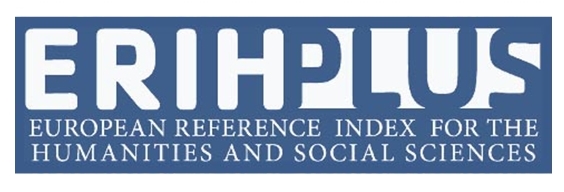Main Article Content
Dec 22, 2022
Abstract
Paradigmatic figure of indigenous barbarism and, therefore, of civilized, white, european and patriarchal Argentina at the end of the nineteenth-century, Ángel Della Valle’s The return of the malon has been actualized in recent decades by a vast amount of cultural productions, generating —in words of Jacques Rancière— dissensiones with this nineteenth-century distribution of the sensible. Therefore, this work aims to adress, starting from the paradigmatology developed by Giorgio Agamben, some of these contemporary actualizations, focusing on the works of the artists Francisco Revelli, Alberto Passolini and Daniel Santoro. And this is because, as it is finally demonstrated, they actualize The return of the malon but they do so within the framework of configurations that not only provoke disagreements with aforementioned distribution, but also open up new semantic horizonts that illuminate, in a singular way, both the past and the present of the country.
Downloads
Policies for open access journals
Authors who publish here accept the following terms: Authors will keep their copyright and will guarantee the journal the right to the first publication of their work, which will be subject to the Licence of Creative Commons acknowledgement, which allows for the use of this material only if the authorship is credited and the original source is acknowledged (the journal’s URL), and if it is not used with commercial ends and with any derivations of the original work.
Authors may adopt other non-exclusive license agreements of distribution of the published version (e.g. to save it onto a digital institutional archive or publish it in a monographic volume) only if the initial publication of this journal is indicated.
It is permitted and recommended for authors to divulge their work on the Internet (e.g. institutional digital archives or webpage) before and during the submission process, which may lead to interesting exchanges and increase the citations of the publication. (See Open Access Effect).
References
Agamben, G. (2010b). Ninfas. Valencia: Pre-textos.
Agamben, G. (2014). Desnudez. Buenos Aires: Adriana Hidalgo.
Bajtin, M. (2003). La cultura popular en la Edad Media y en el Renacimiento. El contexto de Francois Rabelais. Buenos Aires: Alianza editorial.
Benjamin, W. (2005). Libro de los pasajes. Madrid: Akal.
Benjamin, W. (2007). Conceptos de filosofía de la historia. La Plata: Terramar.
Coll, S. (2017). La perspectiva barrial de “Buenos Aires en Camiseta”. Una mirada alternativa de la ciudad (1953-1962) (Tesis de pregrado). Universidad Torcuato Di Tella, Buenos Aires, Argentina. Recuperado de https://repositorio.utdt.edu/bitstream/handle/utdt/6499/LHIS_2017_Coll.pdf?sequence=1&isAllowed=y
Díaz Brochet, N. (25 de diciembre de 2015): Los guerreros de Terracota, listos para asombrar. Diario La Nación. Recuperado de https://www.lanacion.com.ar/1838787-los-guerreros-de-terracota-listos-para-asombrar.
Didi-Huberman, G. (2015). Ante el tiempo. Historia del arte y anacronismo de las imágenes. Buenos Aires: Adriana Hidalgo editora.
Fundación Malba (2010). Contemporáneo 25. Alberto passolini, Malona! Recuperado de https://www.malba.org.ar/evento/contemporaneo-25-alberto-passolini-malona/
Gallardo Porras, V. (2012). Rugendas, artista viajero y su aporte a la construcción de la representación indígena. Tiempo Histórico. Revista de escuela de historia, (4), 67-86. https://doi.org/10.25074/th.v0i4.233
Gamerro, C. (2019). Facundo o Martín Fierro. Los libros que inventaron la Argentina. Buenos Aires: Sudamericana.
Gutiérrez De Angelis, M. (2017). La vuelta del malón. Cultura visual y violencia estatal en Argentina. E-imagen, revista 2.0. Estudios de la imagen, (4). Recuperado de https://www.e-imagen.net/la-vuelta-del-malon-cultura-visual-y-violencia-estatal-en-argentina/
Lebenglik, F. (18 de Mayo de 2010). Un pintor que dio vuelta la taba. Diario Página/12. Recuperado de https://www.pagina12.com.ar/diario/suplementos/espectaculos/6-17990-2010-05-18.html
Malosetti Costa, L. y Penhos, M. (1991). Imágenes para el desierto argentino. Apuntes para una iconografía de la pampa. En Anónimo, Ciudad/campo en las Artes en Argentina y Latinoamérica (pp. 195-204). Buenos Aires: CAIA.
Malosetti Costa, L. (2001). Los Primeros Modernos. Arte y Sociedad en Buenos Aires a fines del siglo XIX. Buenos Aires: Fondo de Cultura Económica
Ministerio de Cultura de la ciudad de Buenos Aires (s/f). Sitios de interés cultural. Museo de la caricatura Severo Vaccaro. Recuperado de https://www.buenosaires.gob.ar/areas/cultura/cpphc/sitios/detalle.php?id=83
Mouffe, Ch. (2011). En torno a lo político. Buenos Aires: Fondo de Cultura Económica.
Rancière, J. (1996). El desacuerdo. Política y filosofía. Buenos Aires: Ediciones Nueva Visión.
Rancière, J. (2014). El reparto de lo sensible. Estética y política. Buenos Aires: Prometeo.
Redacción NU (12 de Junio del 2020). El artista que le llevó el cuadro a Cristina desmintió a los trolls macristas. Noticias urbanas. Recuperado de https://www.noticiasurbanas.com.ar/noticias/el-artista-que-le-llevo-el-cuadro-a-cfk-desmintio-a-los-trolls-macristas/
Said, E. (2008). Orientalismo. Barcelona: Debolsillo.
Santos, F. (2014). Prólogo. En A. Warburg. La pervivencia de las imágenes (pp. 11-24). Buenos Aires: Miluno.
Silvestri, G. (2011). El lugar común. Una historia de las figuras de paisaje en el Río de la Plata. Buenos Aires: Edhasa.
Vázquez, C. (2013). Entre el arte y la política: la representación de la figura de la cautiva en la obra de Daniel Santoro. Culturales, 2(1), 171-198. Recuperado de http://culturales.uabc.mx/index.php/Culturales/article/view/161/163






